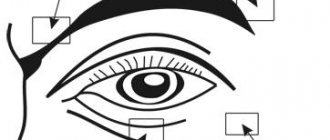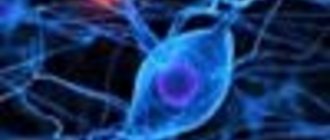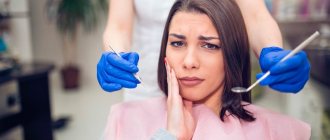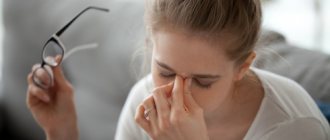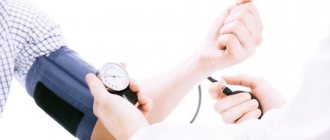Causes of Bruxism
Due to the large number of etiological theories, this disease can be diagnosed by neurological, dental, gastroenterological, and otolaryngological doctors. Risk factors that can trigger the development of pathology include the following conditions:
- psycho-emotional stress;
- stress;
- malocclusion;
- damage to the v pair of cranial nerves;
- inflammation of the temporomandibular joint;
- dental anomalies;
- poor-quality installation of dentures;
- adenoids;
- inflammation of the nasal mucosa;
- deviated nasal septum;
- helminthic infestation;
- gastroesophageal reflux;
- traumatic brain injury;
- Parkinson's disease.
Bruxism in adolescents may be associated with hormonal changes in the body, increased stress on the nervous system, and emotional instability. There is an increased likelihood of the disease occurring in people who smoke, drink alcohol, drink large quantities of coffee, take sleeping pills or antidepressants, and often chew chewing gum.
Types of bruxism
Due to the development of the disease, it is divided into two main types:
- primary bruxism - associated with heredity, transmitted at the level of genetic information from parents;
- secondary occurs as a result of other pathological conditions.
Taking into account the peculiarities of the course of the disease, there are three of its forms, which arise sequentially, namely:
- initial stage - characterized by grinding of teeth, without any additional complaints from patients;
- acute form - in addition to the symptoms that arose in the initial stage, pain occurs during clenching of the jaws;
- chronic process - represents the development of complicated conditions such as periodontitis, abrasion of enamel.
Depending on what time of day the disease manifests itself, it can be daytime, nighttime, or combined.
How to treat bruxism
Depending on the cause of the disease, the doctor prescribes treatment, which consists of two stages: in the first, it is necessary to eliminate the source, in the second, the consequences. If bruxism is caused by mental disorders, therapy methods and medications are used to relax the muscles of the face and neck and relieve spasms. For this purpose, sedatives and hypnotics, magnesium, B vitamins and others are prescribed. You may also need manual methods - massage and compresses. Often, special night guards are made for the patient during the treatment period to avoid damage to teeth and enamel during sleep. When the causes are eliminated, prosthetics, orthodontic treatment or teeth grinding may be prescribed, depending on the consequences of the disease. Upon completion of treatment, you can begin to eliminate the consequences of bruxism - installing veneers, crowns and fillings.
Comprehensive treatment of teeth grinding during sleep in adults takes from a couple of months to 2-3 years. To prevent bruxism, you need to pay sufficient attention to your teeth: visit the dentist at least twice a year, restore missing teeth as they are lost, avoid stressful situations, and monitor your health in general. If you suspect bruxism, you can always contact the specialists at Comfort Dentistry for advice and a thorough diagnosis.
Symptoms of Bruxism
Clinical signs of pathology provoke the following complaints in patients:
- grinding of teeth during sleep, which lasts about ten seconds, this symptom is often noted by relatives as the patient does not control his movements and does not notice muscle contractions during sleep;
- pain in the teeth or face;
- dizziness;
- increased fatigue, daytime sleepiness.
There is also a connection between bruxism and tinnitus - sometimes this symptom may not be associated with otolaryngological pathology. Nocturnal bruxism is often diagnosed in adults and children, however, manifestations of the disease can also appear during the day.
Symptoms and complications of bruxism
Along with teeth grinding itself, bruxism also manifests itself in other ways. So, after night attacks, you may feel pain and tension in the jaw area, headaches and other unpleasant symptoms.
The consequence of bruxism is the abrasion of tooth enamel, which is fraught with the development of severe caries, since the enamel is worn away over a fairly large area. In some cases, dental treatment becomes impossible and dentures have to be installed.
In most cases, bruxism develops under the influence of several factors.
Diagnosis of bruxism
To make a diagnosis, the dentist carefully listens to the patient’s complaints and conducts an examination of the oral cavity. Brux checkers can also be used - these are special mouthguards made in accordance with the structure of the patient’s dentition, which he puts on at night. The next day, they are submitted to the attending physician, who conducts an analysis, calculating which teeth are subject to excess load.
Additional examination methods can be used:
- electromyography is a method for diagnosing bioelectric potentials that arise in various muscle groups during their excitation and contraction, allowing one to evaluate the activity of muscle activity;
- polysomnography is an objective study consisting of recording various indicators of breathing, posture, electrical biopotentials of the muscular system, and cardiac activity, which are recorded during a person’s physiological sleep.
The presence of the fact of the disease does not provide complete information for prescribing treatment; an important aspect is to determine its root cause; for this, the patient must consult a neurologist for bruxism, an ENT specialist, or a gastroenterologist.
Treatment of wedge-shaped defect
Treatment of wedge-shaped defects and other types of non-carious lesions begins with identifying and eliminating the root cause. Since most cases of the disease have orthodontic causes, bite correction will reduce the likelihood of pathology. However, experts note that in the case of a wedge-shaped defect, a number of factors can work, so treatment is complex. As for correcting the pathology itself, the main thing here is the restoration of functional and aesthetic indicators. Depending on the degree of damage, appropriate treatment methods are used.
| Form of pathology | Treatment |
| Lightweight | When the depth of the grooves does not exceed 0.5 mm, classical filling may not be required, however, to eliminate the risk of worsening the defect, filling with liquid composites (Filtek Flow, Flow It and others), as well as teeth grinding, is performed. Procedures aimed at remineralization of tooth enamel: fluoridation, applications with a solution of calcium gluconate, taking multivitamin complexes. If the cause is poor hygiene or poor diet, the doctor will correct these two points. |
| Medium and developed | If incorrect occlusal contact is detected, orthodontic or orthopedic treatment is prescribed, as well as grinding of antagonist teeth for proper closure. Filling a wedge-shaped defect is much more difficult, since due to the location of the deformation they are much more likely to fall out. Glass ionomer cements and microphilic composites can be used as filling materials. The use of other materials for the restoration of a wedge-shaped defect is strictly not recommended. |
| Heavy | Unfortunately, in severe cases, filling does not always give positive results (due to the size of the defect). If therapeutic treatment is impossible, the pathology is corrected using a prosthesis. In some cases, the tooth must be completely removed. |
Treatment of a wedge-shaped defect at home is possible only in the earliest stages of the pathology as part of complex therapy.
Treatment of bruxism
Taking into account the etiology of the disease, the optimal therapeutic method is selected. There are the following patient management options:
- drug treatment - includes the prescription of medication to prevent involuntary contractions of the muscles of the masticatory group, multivitamin complexes, Ca and Mg preparations, bruxism is treated with Botox;
- psychotherapeutic activities - involve attending self-control training to relieve nervous tension and stress;
- physiotherapy - based on the prescription of special exercises and self-massage for bruxism, placing warm compresses on the jaw, and manual procedures.
The dentist carries out grinding of the dentition, installing implants and dentures, correcting the bite, prescribing the wearing of special mouthguards for bruxism to reduce overstrain of the teeth.
Bruxism
Treatment of bruxism
Childhood bruxism caused by teething usually does not require the use of therapeutic measures, since it usually goes away on its own by the age of six to seven years.
If it does not go away after the age of seven, it must be treated according to the method of treating bruxism in adults. Therapeutic tactics aimed at eliminating this pathology involve the use of a set of measures, which includes dental, psychotherapeutic, physiotherapeutic and drug treatment. The first stage of treatment for bruxism is to identify and eliminate the cause of its development.
Application of trainings, relaxation
Very often, good results in this pathological condition can be achieved by using various trainings, general relaxation, etc. The patient must direct all efforts to control his facial muscles in stressful situations, the patient must learn to relax and not overexert.
Drug treatment
Drug therapy is usually used to reduce overactivity of the masticatory muscles. For this purpose, patients are recommended to take sedatives, mild hypnotics, magnesium and calcium supplements, injections of botulinum toxin, and vitamin therapy (B vitamins).
Alternative treatments
Sometimes osteopathic treatment, manual therapy, and massage are indicated for bruxism. Removing muscle tone from the chewing muscles is facilitated by applying warm compresses before bed and hot baths with aromatic oils.
Using a mouthguard
Along with eliminating the cause of the disease, it is necessary to limit the mechanical impact on the teeth and surrounding soft tissues. To do this, special protective mouth guards are made from impressions of the patient’s teeth, which are subjected to compression instead of the teeth. Mouth guards for bruxism are made from bioplastic and biosilicone by a dental technician in a dental laboratory, after which they are sent to the clinic for fitting. The use of a mouthguard is a protective measure and does not cure the disease itself, so it is only an element of complex therapy. In some cases, it is advisable to correct the bite, replace missing teeth, replace crowns and dentures, as well as other measures that can help get rid of bruxism.
Restorative measures (installation of veneers, restoration of wedge-shaped defects, treatment of periodontitis, aesthetic manipulations) can be carried out only after bruxism has been cured.
Bruxism in children
In childhood, this symptomatology can manifest itself during the change of dentition from baby teeth to permanent ones - this is not a sign of a pathological process. Often, specific treatment is not required; by the age of six, these signs may disappear on their own.
The causes of night and daytime bruxism can be adenoids, psychological stress, malocclusion, and helminthic infestation. Overeating is also a risk factor; the child should not eat solid, heavy foods, especially if this disease is present; the diet should consist of soups, yoghurts, fruits and vegetables, and cereals.
Symptomatic manifestations include grinding of teeth at night, headache, lack of sleep, and drowsiness. Diagnosis is based on visual research methods, electromyography and polysomnography data.
Consequences of bruxism
The negative consequences of the disease include the development of the following pathological conditions:
- increased abrasion of tooth enamel;
- increased sensitivity to high and low temperatures;
- superficial damage to the enamel - cracks, chips;
- periodontal inflammation;
- pathological looseness of teeth, contributing to their loss;
- breakage of artificial crowns, dentures, implants;
- functional disorders in the temporomandibular joint;
- hypertrophic processes of masticatory muscles;
- lack of full range of motion in the jaw joint.
Causes of bruxism during sleep
Grinding often occurs against the background of numerous and prolonged stress, neuroses, unstable psycho-emotional state, and high psychological stress. If the cause of the disease lies in a disruption of the nervous system, in parallel the patient may suffer from temporary cessation of breathing during sleep, snoring, sleepwalking and bedwetting.
In addition to psychological problems, bruxism is also caused by disturbances in the structure of the dentofacial apparatus. For example, with malocclusions, crowded teeth, installation of inappropriate size and height of dentures and fillings, and the absence of several teeth. Also, the cause of bruxism in adults can be disturbances in the functioning of the respiratory system. Due to the wide range of possible sources of the disease, related specialists are often involved in diagnosis: gastroenterologist, neurologist, ENT specialist, psychotherapist.

